
Thoroughgood "Thurgood" Marshall was an American civil rights lawyer and jurist who served as an associate justice of the Supreme Court of the United States from 1967 until 1991. He was the Supreme Court's first African-American justice. Prior to his judicial service, he was an attorney who fought for civil rights, leading the NAACP Legal Defense and Educational Fund. Marshall was a prominent figure in the movement to end racial segregation in American public schools. He won 29 of the 32 civil rights cases he argued before the Supreme Court, culminating in the Court's landmark 1954 decision in Brown v. Board of Education, which rejected the separate but equal doctrine and held segregation in public education to be unconstitutional. President Lyndon B. Johnson appointed Marshall to the Supreme Court in 1967. A staunch liberal, he frequently dissented as the Court became increasingly conservative.
Brown v. Board of Education of Topeka, 347 U.S. 483 (1954), was a landmark decision by the U.S. Supreme Court which ruled that U.S. state laws establishing racial segregation in public schools are unconstitutional, even if the segregated schools are otherwise equal in quality. The decision partially overruled the Court's 1896 decision Plessy v. Ferguson, which had held that racial segregation laws did not violate the U.S. Constitution as long as the facilities for each race were equal in quality, a doctrine that had come to be known as "separate but equal". The Court's unanimous decision in Brown paved the way for integration and was a major victory of the civil rights movement, and a model for many future impact litigation cases.
Heart of Atlanta Motel, Inc. v. United States, 379 U.S. 241 (1964), was a landmark decision of the Supreme Court of the United States holding that the Commerce Clause gave the U.S. Congress power to force private businesses to abide by Title II of the Civil Rights Act of 1964, which prohibits discrimination on the basis of race, religion, or national origin in public accommodations.
Separate but equal was a legal doctrine in United States constitutional law, according to which racial segregation did not necessarily violate the Fourteenth Amendment to the United States Constitution, which nominally guaranteed "equal protection" under the law to all people. Under the doctrine, as long as the facilities provided to each "race" were equal, state and local governments could require that services, facilities, public accommodations, housing, medical care, education, employment, and transportation be segregated by "race", which was already the case throughout the states of the former Confederacy. The phrase was derived from a Louisiana law of 1890, although the law actually used the phrase "equal but separate".

Lloyd Lionel Gaines was the plaintiff in Gaines v. Canada (1938), one of the most important early court cases in the 20th-century U.S. civil rights movement. After being denied admission to the University of Missouri School of Law because he was African American, and refusing the university's offer to pay for him to attend a neighboring state's law school that had no racial restriction, Gaines filed suit. The U.S. Supreme Court ultimately ruled in his favor, holding that the separate but equal doctrine required that Missouri either admit him or set up a separate law school for black students.
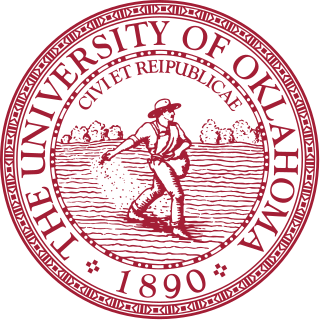
The University of Oklahoma (OU) is a public research university in Norman, Oklahoma, United States. Founded in 1890, it had existed in Oklahoma Territory near Indian Territory for 17 years before the two territories became the state of Oklahoma. In Fall 2022, the university had 28,840 students enrolled, most at its main campus in Norman. Employing nearly 3,000 faculty members, the university offers 152 baccalaureate programs, 160 master's programs, 75 doctoral programs, and 20 majors at the first professional level.
Sweatt v. Painter, 339 U.S. 629 (1950), was a U.S. Supreme Court case that successfully challenged the "separate but equal" doctrine of racial segregation established by the 1896 case Plessy v. Ferguson. The case was influential in the landmark case of Brown v. Board of Education four years later.
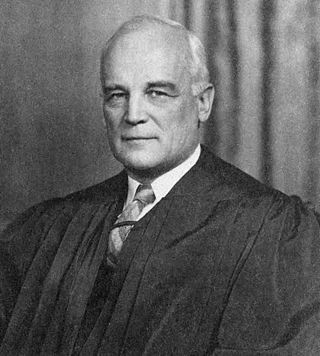
Harold Hitz Burton was an American politician and lawyer. He served as the 45th mayor of Cleveland, Ohio, as a U.S. Senator from Ohio, and as an associate justice of the Supreme Court of the United States.
United States v. Virginia, 518 U.S. 515 (1996), is a landmark case in which the Supreme Court of the United States struck down the long-standing male-only admission policy of the Virginia Military Institute (VMI) in a 7–1 decision. Justice Clarence Thomas, whose son was enrolled at the university at the time, recused himself.
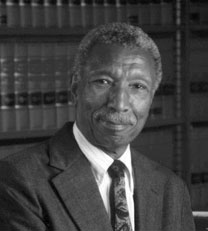
Robert Lee Carter was an American lawyer, civil rights activist and a United States district judge of the United States District Court for the Southern District of New York.
Lucy v. Adams, 350 U.S. 1 (1955), was a U.S. Supreme Court case that successfully established the right of all citizens to be accepted as students at the University of Alabama.
The University of Texas School of Law is the law school of the University of Texas at Austin, a public research university in Austin, Texas. According to Texas Law’s 2019 disclosures, 90 percent of the Class of 2019 obtained full-time, long-term bar passage required/JD advantage employment nine months after graduation.
Missouri ex rel. Gaines v. Canada, 305 U.S. 337 (1938), was a United States Supreme Court decision holding that states which provided a school to white students had to provide in-state education to Black students as well. States could satisfy this requirement by allowing Black and white students to attend the same school or creating a second school for Black students.
Sipuel v. Board of Regents of the University of Oklahoma, 332 U.S. 631 (1948), is a per curiam United States Supreme Court decision involving racial segregation toward African Americans by the University of Oklahoma and the application of the Fourteenth Amendment to the United States Constitution.

The Bizzell Memorial Library, known also as Bizzell Library, is a five-story brick structure located at the University of Oklahoma in Norman, Oklahoma. It is an elaborate Collegiate Gothic or Cherokee Gothic building, designed by the architecture firm Layton Hicks & Forsyth and erected in 1928 during the administration of OU's fifth president, William Bennett Bizzell.
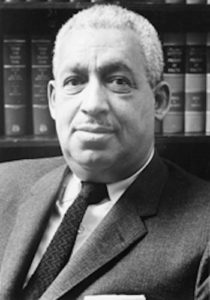
William Robert Ming Jr. was an American lawyer, attorney with the National Association for the Advancement of Colored People (NAACP) and law professor at University of Chicago Law School and Howard University School of Law. He presided over the Freeman Field mutiny court-martials involving the Tuskegee Airmen. He is best remembered for being a member of the Brown v. Board of Education litigation team and for working on a number of the important cases leading to Brown, the decision in which the United States Supreme Court ruled de jure racial segregation a violation of the Equal Protection Clause of the Fourteenth Amendment of the United States Constitution.
NCAA v. Board of Regents of the University of Oklahoma, 468 U.S. 85 (1984), was a case in which the Supreme Court of the United States held that the National Collegiate Athletic Association (NCAA) television plan violated the Sherman and Clayton Antitrust Acts, which were designed to prohibit group actions that restrained open competition and trade.
Ivey Foreman Lewis was an American botanist and geneticist who served for two decades as dean of the University of Virginia and helped found the Virginia Academy of Science. A proponent of eugenics throughout his career, in his final years, Lewis and his sister Nell Battle Lewis gained national attention for their opposition to racial desegregation in public education, especially the United States Supreme Court decisions in Brown v. Board of Education.
George W. McLaurin was an American professor, and the first African-American to attend the University of Oklahoma. He was the successful plaintiff in a an important civil rights case against the university, McLaurin v. Oklahoma State Regents (1950).
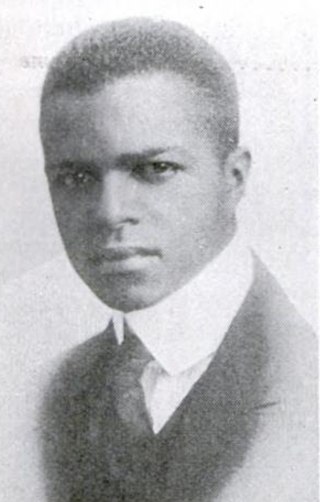
Charles Henry Thompson was an American educational psychologist and the first African-American to earn a doctorate degree in educational psychology. He obtained a Master's degree and Ph.D at the University of Chicago. Born in Jackson, Mississippi, he became an educator at Howard University. During his time at Howard, he was the dean of the liberal art college and later became the dean of Howard's graduate school, where he made several administrative and scholarship changes. Additionally, he founded The Journal of Negro Education, an academic journal pertaining to the education of African-American students. Thompson himself published more than 100 scholarly articles, editorials, and research papers, many of which pertained to the teaching and advancement of African-American students' education. Throughout his extensive academic career, he was a legal consultant for various desegregation school cases, prominently in Sweatt v. Painter, Sipuel v. Board of Regents of the University of Oklahoma, McLaurin v. Oklahoma State Regents. He also was a legal consultant for Brown vs. Board of Education, though to a lesser extent that the three former cases.








